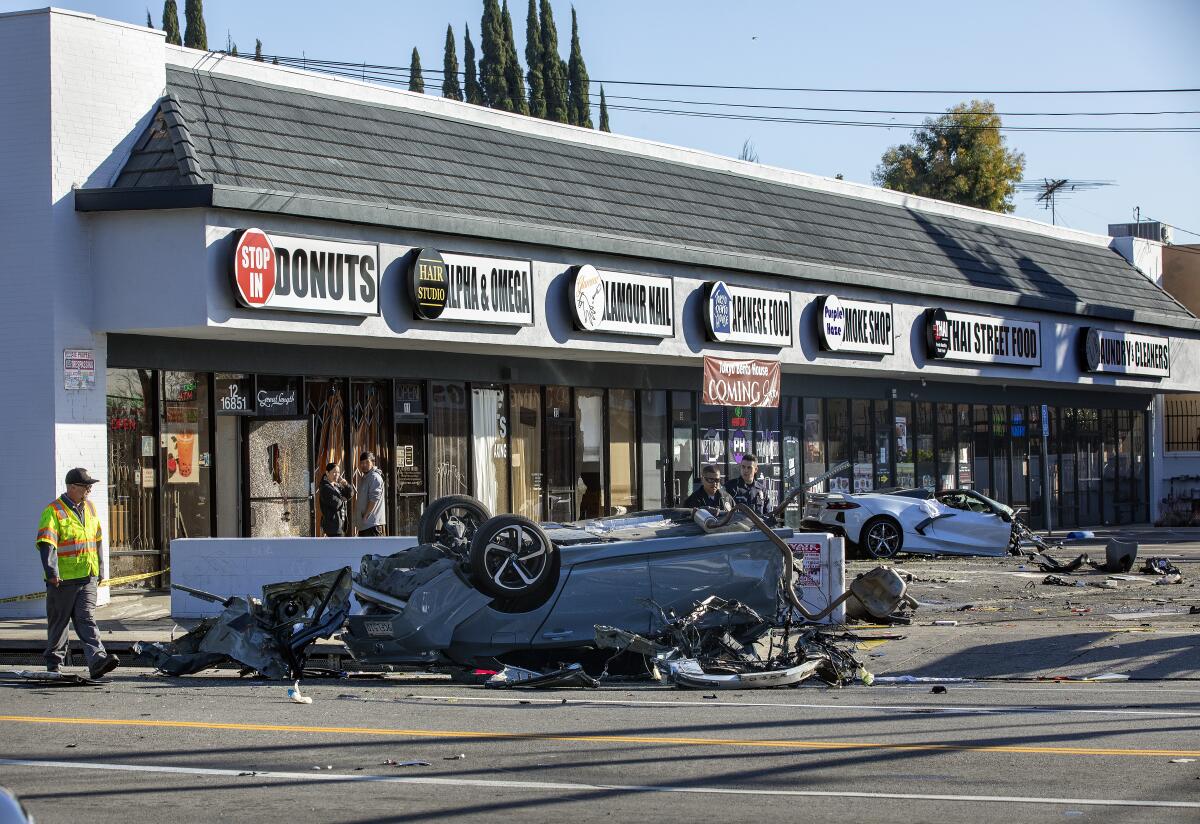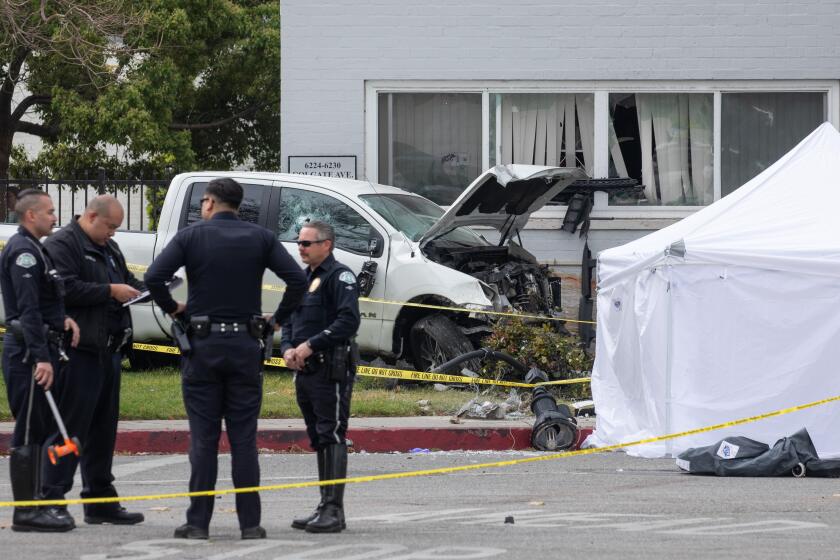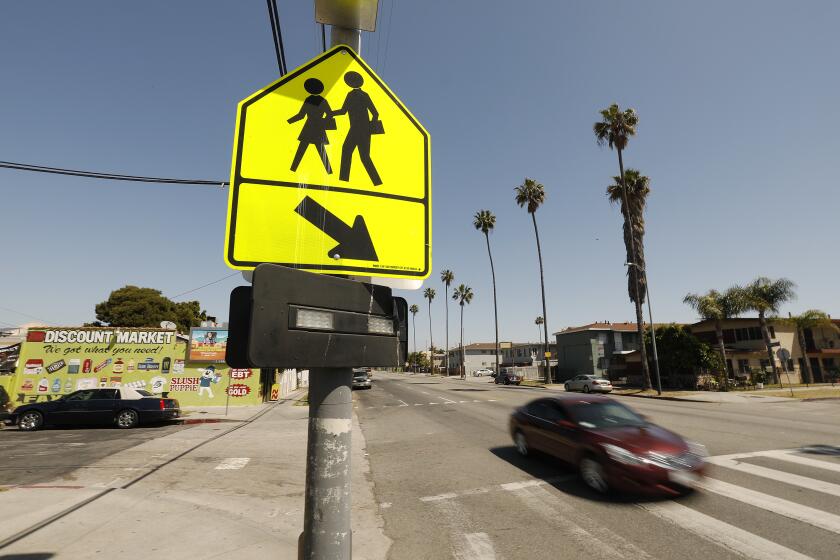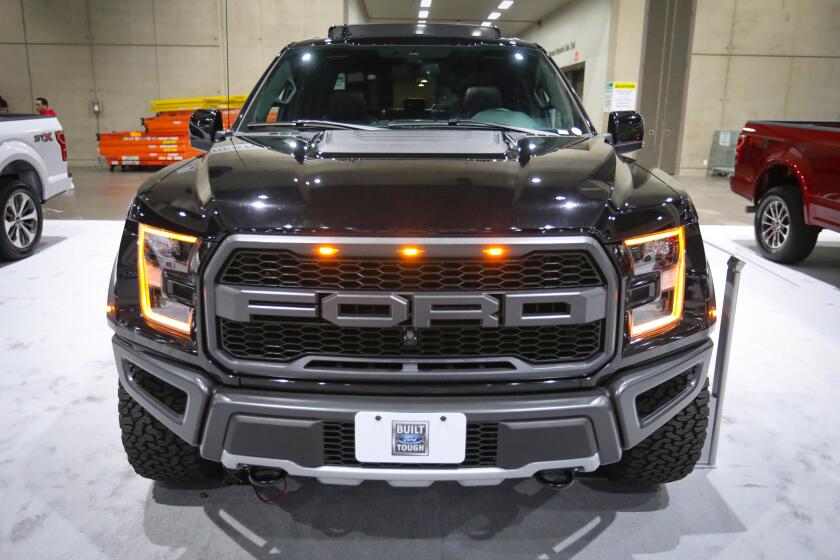Editorial: California, legalize speed cameras and save lives

What if California could quickly make some of the state’s most speed-prone and dangerous streets safer? With traffic deaths on the rise in California, and particularly in cities, such as Los Angeles and San Jose, you’d think lawmakers would eagerly adopt a proven strategy for saving lives.
You would be wrong. In 2021 and 2022, state legislators killed bills that would override the state prohibition on automated speed enforcement and let some cities install speed cameras to catch and ticket motorists who egregiously exceed the speed limit.
This year, lawmakers are considering a proposal for a five-year pilot program to test the effectiveness of speed cameras in six cities: Los Angeles, Glendale, Long Beach, San Francisco, San Jose and Oakland. Assemblymember Laura Friedman (D-Glendale) has written Assembly Bill 645 to ensure speed cameras are used as a safety tool — not a money maker for cities.
Redesigning streets to slow cars would make L.A. safer — yet city leaders tolerate tragedies, like that of the mother mowed down this week while walking her child to school.
There’s no reason not to try speed cameras in California. Automated speed enforcement is used in 189 communities across the country and in other nations with great success. An overview of 28 studies found that after cameras were put into use, all crashes in the vicinity decreased between 8% and 49%. Fatal and serious injury crashes dropped between 11% and 44%.
Excessive speed is a factor in nearly 30% of traffic fatalities. And it can make the difference between life and death. A pedestrian hit by a vehicle traveling around 20 mph has a 90% chance of survival; at 40 mph, 50%, and at speeds above 50 mph, the survival rate is 25%, according to a 2011 analysis. (And that was before the proliferation of SUVs and pickups that are taller, heavier and more deadly to pedestrians.)
Moreover, exceeding the speed limit has become the norm, particularly on wide, straight streets that were designed to move cars quickly. Research suggests that drivers frequently underestimate how fast they’re driving by up to 30%.
That’s where speed cameras can be useful. They are both an education tool, with plenty of signs alerting drivers to slow down, and an enforcement tool to curb dangerous habits. Seven years after Montgomery County, Md., adopted the nation’s first automated speed enforcement program, 76% of drivers surveyed said the cameras had caused them to slow down.
Legislation in Sacramento would allow pilot programs in six cities to issue automated tickets. It’s not a moneymaking scheme; it’s about making streets safe.
AB 645 would allow six cities to put up a limited number of automated speed enforcement systems, depending on their population. For example, L.A., with more than 3 million residents, could install a maximum of 125 cameras. Glendale, a city with a population of less than 300,000, could install no more than nine. The cameras could only go in school zones or on streets identified as having high numbers of traffic injuries and deaths or having problems with street racing. During the first 60 days of operation, speeding motorists caught by the camera would only receive a warning.
The law would let cities ticket cars going more than 11 mph over the speed limit. The violations would be civil penalties, and the fine would increase with the speed recorded: $50 for driving 11 mph over the speed limit; $100 for 16 mph over the limit; $200 for 26 mph over the limit; and $500 for driving over 100 mph. Cities would have to cut the penalties by half, or more, for low-income households.
Ticket revenue could be used to cover program costs and for street projects designed to slow traffic. But any leftover money would go to the state to fund pedestrian and bicycle safety projects, not city coffers.
California lawmakers are considering a proposal that could charge car owners a fee for registering heavier vehicles. It’s a small but important step.
To address the legitimate equity concerns, cities would have to work with communities and analyze the potential racial and economic impacts of speed enforcement cameras. That’s important because some of the deadliest streets are located in low-income communities of color, where cities have neglected to install sidewalks, bike paths, streetlights and medians that can naturally slow speeds. While automated speed enforcement could potentially cut down on racial bias in traffic enforcement, cities need to be careful to ensure those communities aren’t disproportionately penalized by speed cameras.
The bill also attempts to alleviate concerns about privacy and surveillance. The cameras won’t use facial recognition software. Instead the systems will capture the rear license plate of all passing vehicles. If there’s a speed violation the ticket would go to the owner of the vehicle. If there’s no violation, the speed camera data would be destroyed within five days. The information collected is confidential and can only be released under court order.
Here’s the key to AB 645 — it’s a test of the technology. If it doesn’t work or advocates find fatal flaws in the operation, California can again ban speed cameras. But the evidence suggests automated speed enforcement is good for communities. It’s about time lawmakers legalize speed cameras and save lives.
More to Read
A cure for the common opinion
Get thought-provoking perspectives with our weekly newsletter.
You may occasionally receive promotional content from the Los Angeles Times.













